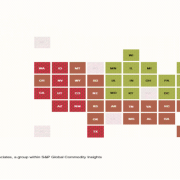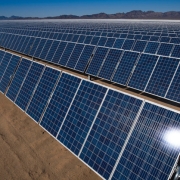Solar capacity factors rose across all independent system operators in 2020, pushing the weighted U.S. average up 1.8 percentage points year over year as more than three-quarters of the states housing utility-scale solar projects experienced increases.
The 2020 weighted U.S. solar capacity factor comes in at a calculated 24.4%, based on S&P Global Commodity Insights estimates. The California ISO tops the ISO leaderboard at nearly 27%, but Utah leads the pack across state lines, with solar plants in the Beehive State averaging almost 30%. Wisconsin, meanwhile, logged the largest gains from 2019 to 2020, up an estimated 8.6 percentage points.
Click here to read the full article
Source: S&P Global
—
If you have any questions or thoughts about the topic, feel free to contact us here or leave a comment below.





